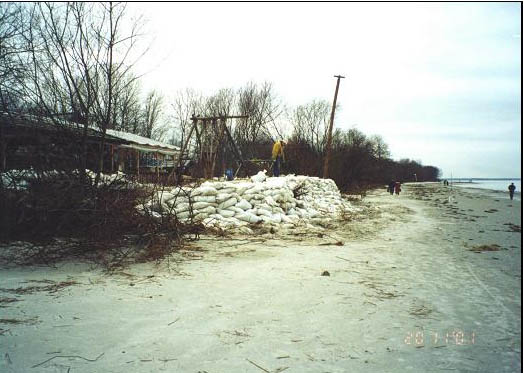(pdf - 1.4 MB)
| Gulf of Riga - Latvia |
| Complete description
of case study (pdf - 1.4 MB) |
PHOTO OF THE SITE
 |
|
CASE STUDY
| Title | Gulf of Riga |
| National level | Latvia |
| Regional level | Vidzeme |
| Local level | Riga |
ABSTRACT
|
The Gulf of Riga case study area focuses on coastal development within the Riga metropolitan area, which includes the coastal zone of two urban municipalities (pilsetas) – Riga and Jurmala. Over a century, the coastal stretch of Jurmala and Riga is close to dynamic equilibrium conditions, with slight prevailing accretion, but in the last two decades an activation of coastal processes has been observed along the entire coastline. The increase in coastal erosion is triggered by the increasing frequency of extremely strong and disastrous storms from the west and north, combined with the wind-induced sea level rise. Direct human impact should also be considered (reduction of sediment input from Lielupe and Daugava rivers, construction of breakwaters in the mouth of Daugava etc.). The increasing erosion currently threatens the recreational functions of the Jurmala beaches and the existence of up to ten ancient villas, which are located too close to the eroded foredune and beach. Any chosen strategy has worked to maintain the key socio-economic functions of the coast until the first extremely strong storm event. |
BASIC INFORMATION
| Coastal characteristics |
|
| Policy options | Limited intervention, Hold the line |
| Socio-economic activities | Tourism and recreation, conservation of cultural and natural heritage, industry, transport and energy, urbanisation, fisheries, aquaculture and agriculture and forestry (small-scale). |
| Engineering techniques | Foredune and forestry maintenance, seawall, revetment, submerged nourishment. |
SOURCE
| Name | Dr. Ramunas Povilanskas |
| Institution | EUCC Baltic office |
| Telephone / fax | +37 (0)6312739 or +37 (0)6398834 |
| ramunas@corpi.ku.lt |